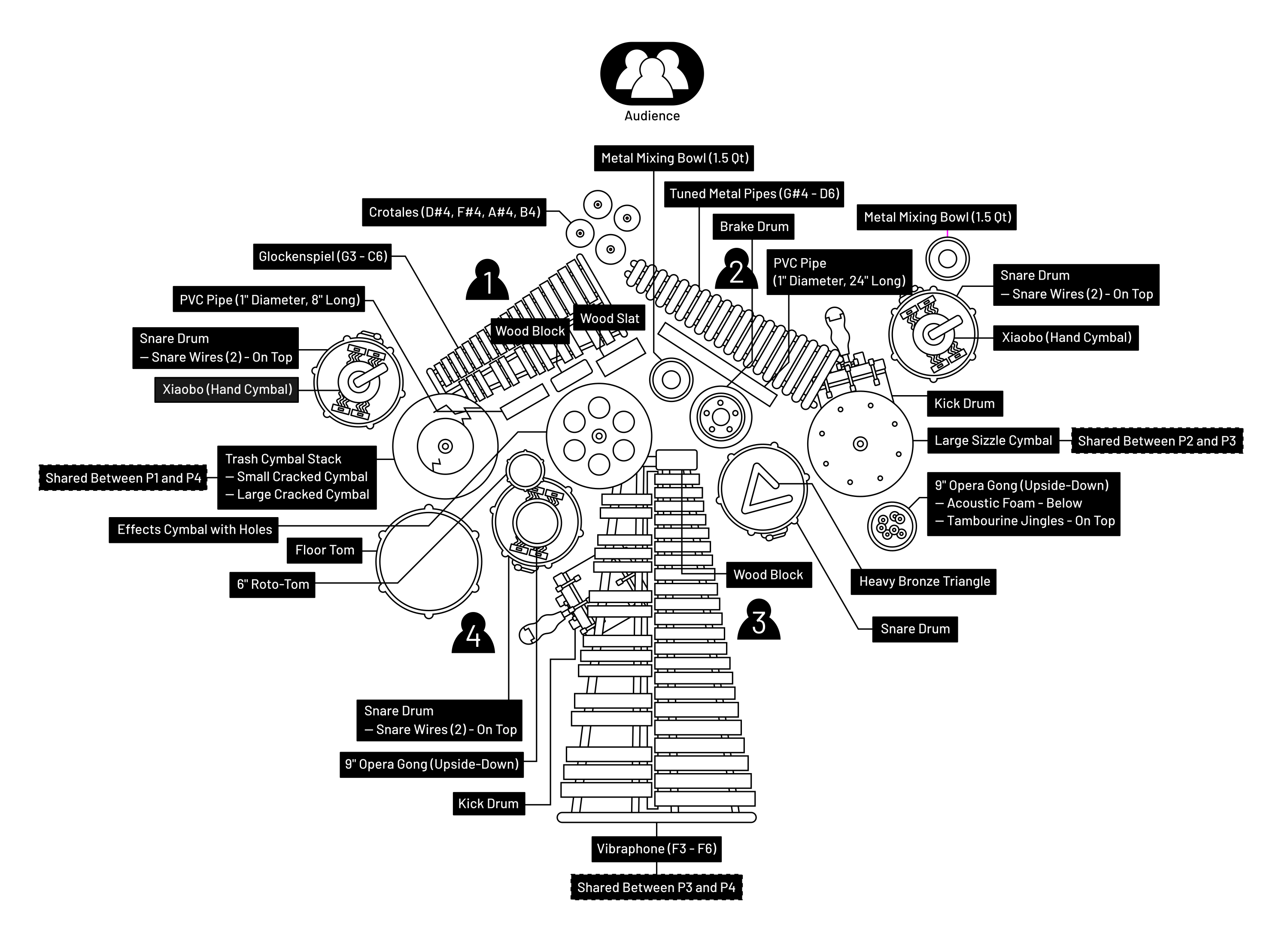SCINTILLATIONS (2024) percussion quartet · 15 minutes · advanced+
SCINTILLATIONS was written for Blacktop Percussion (Brandon Berlanga, John Dawson, Michael Lee-Smith, Remington Thomas) and a consortium of 19 individuals and ensembles.
Consortium members currently retain exclusivity until July 1st, 2025.

consortium members
Brant Blackard · Cory Doran · Eastman Percussion Ensemble (Michael Burritt) · Scott Gustafson · Chris Harris · KMFA 89.5 · The OCU Percussion Group (Tommy Dobbs) · Matchstick Percussion · Central Michigan University (Marco Schirrpa) · Cy Miessler · Paul Millette · MouSai Duo (Maddie Wallace and Sophia Lo) · Penn State Percussion Studio (Lee Hinkle) · Carl Tafoya · Texas A&M University-Commerce (Brian Zator) · Ivan Trevino · UT Austin Percussion Ensemble (Thomas Burritt) · Graham Viegut · The Wildlight Collective
I am so wonderfully grateful for all of your support. Thank you.
I. the sun talks in wailing song
Nuclear fusion lives at the hearts of stars and suns. Stars are violent forces—constantly screeching into an empty void, unheard. I wonder what they're saying?
Musically, this movement draws upon violent, visceral breakbeat drum loops and overdrive distortion—a manic embodiment of a star's machinations.
II. the void murmurs in wistful static
Cosmic background radiation. It's the quiet hum of the universe, born from echoes of the Big Bang. Turn on an old TV, and listen. A tiny portion of that static is from the universe’s creation. Map out this static into pictures, and gentle undulating waves paint the canvas.
Musically, this movement draws upon static-filled deep-space radio telescope recordings, memories of practicing mindfulness and meditation, cicada calls on summer evenings under starless nights, rain, post-rock, noise music, minimalist classical music, and ambient music.
III. the radium howls in winking starlight
Spinthariscopes are old 1900s era toys—visually similar to a kaleidoscope. Hold one up to your eyes, and see tiny flashes of light. Within the toy, a radioactive element would decay, then emit a particle. This particle would strike a special material, and this material would emit light—displaying the impact of individual atoms decaying, in real time. This special material was called a scintillator, and these flashes are called scintillations.
Musically, this piece draws upon a vibrant fusion of all my musical experiences—from chiptune-breakcore to riff-heavy video game music to math rock to jazz.
Much of this movement embraces the contemporary, rhythmically-complex percussion repertoire—repertoire that Brandon and Michael introduced me to, on late nights filled with merry mirth and laughter while I was a freshman in college.
This movement is about those memories—those "flashes of light" late at night, happy flashes of memories shared between friends. It's filled with references to these memories, from the music to the conversations, the teachers we've shared, the moments we've held together.
It's like taking those memories and putting them in a bottle or toy—like a little spinthariscope of my early days in college.
As we grow older and our paths diverge further apart, it's starting to become more and more real to me that those days are over.
I can't get those days back.
But hey, I can create new ones. I'm writing for fantastic people—old and new.
I'm creating new memories, with this music.
III. the radium howls in winking starlight is a love letter to those memories, and what they can do.
It’s a dream-like interpretation of songs and conversations as musical processes and radioactive flashes of sound.